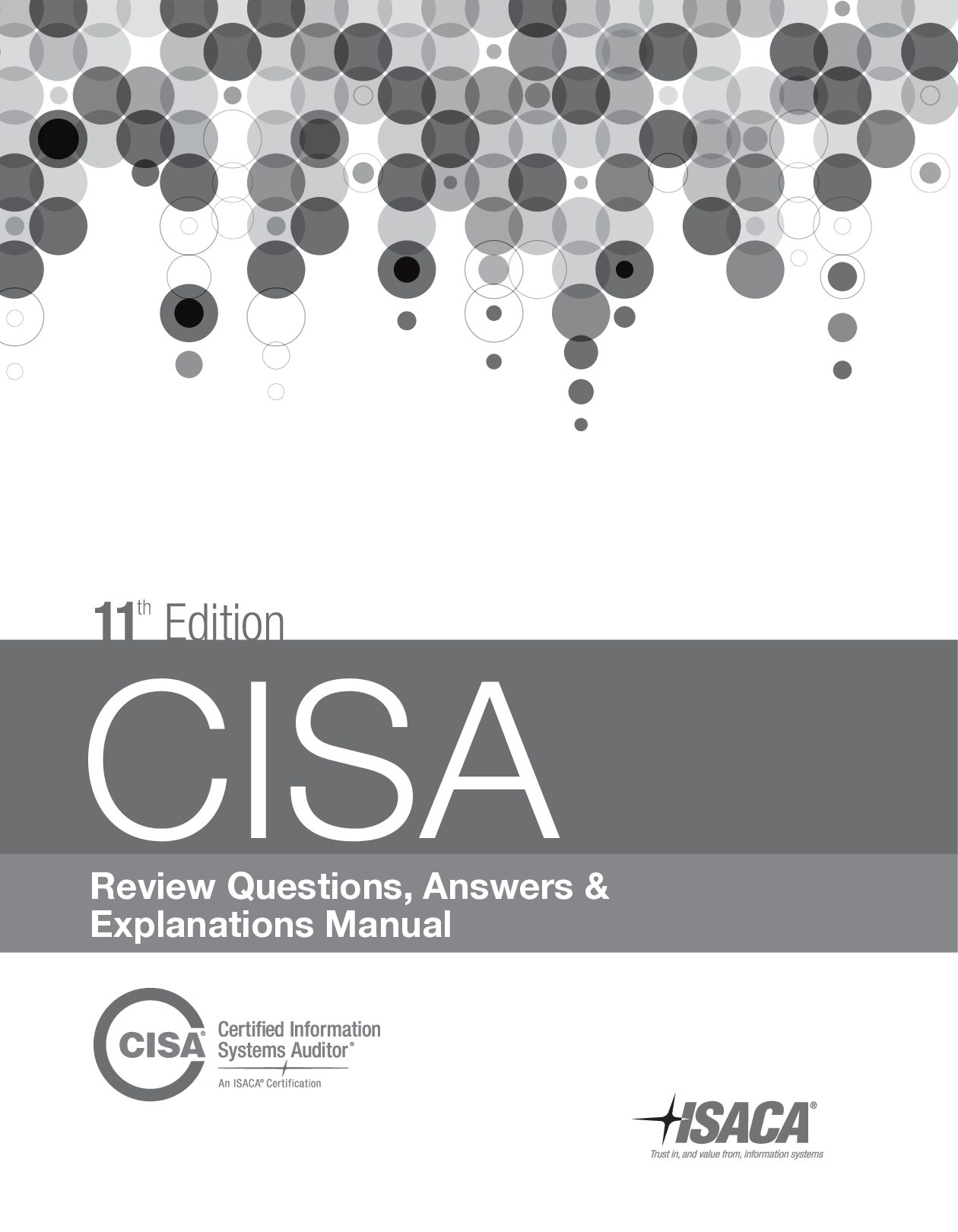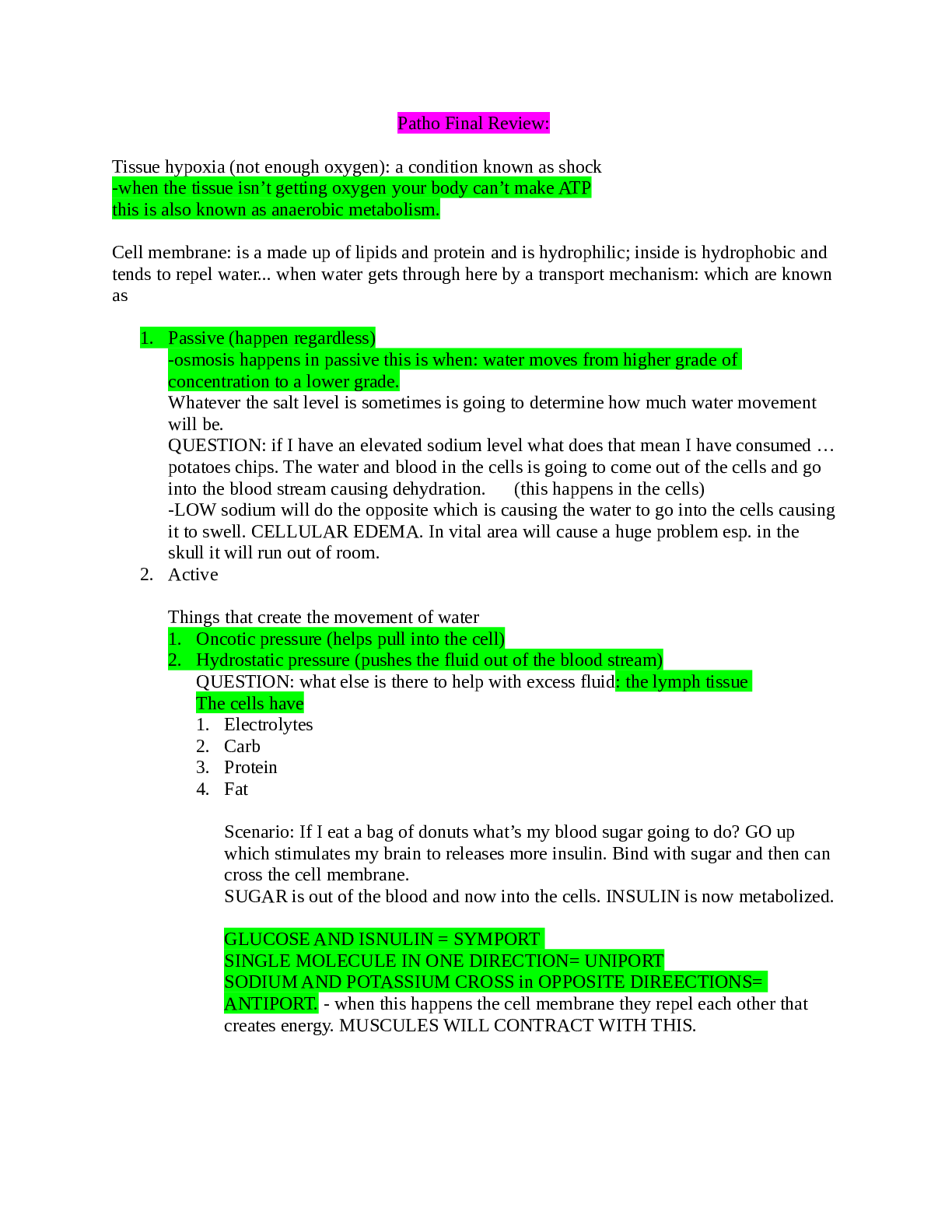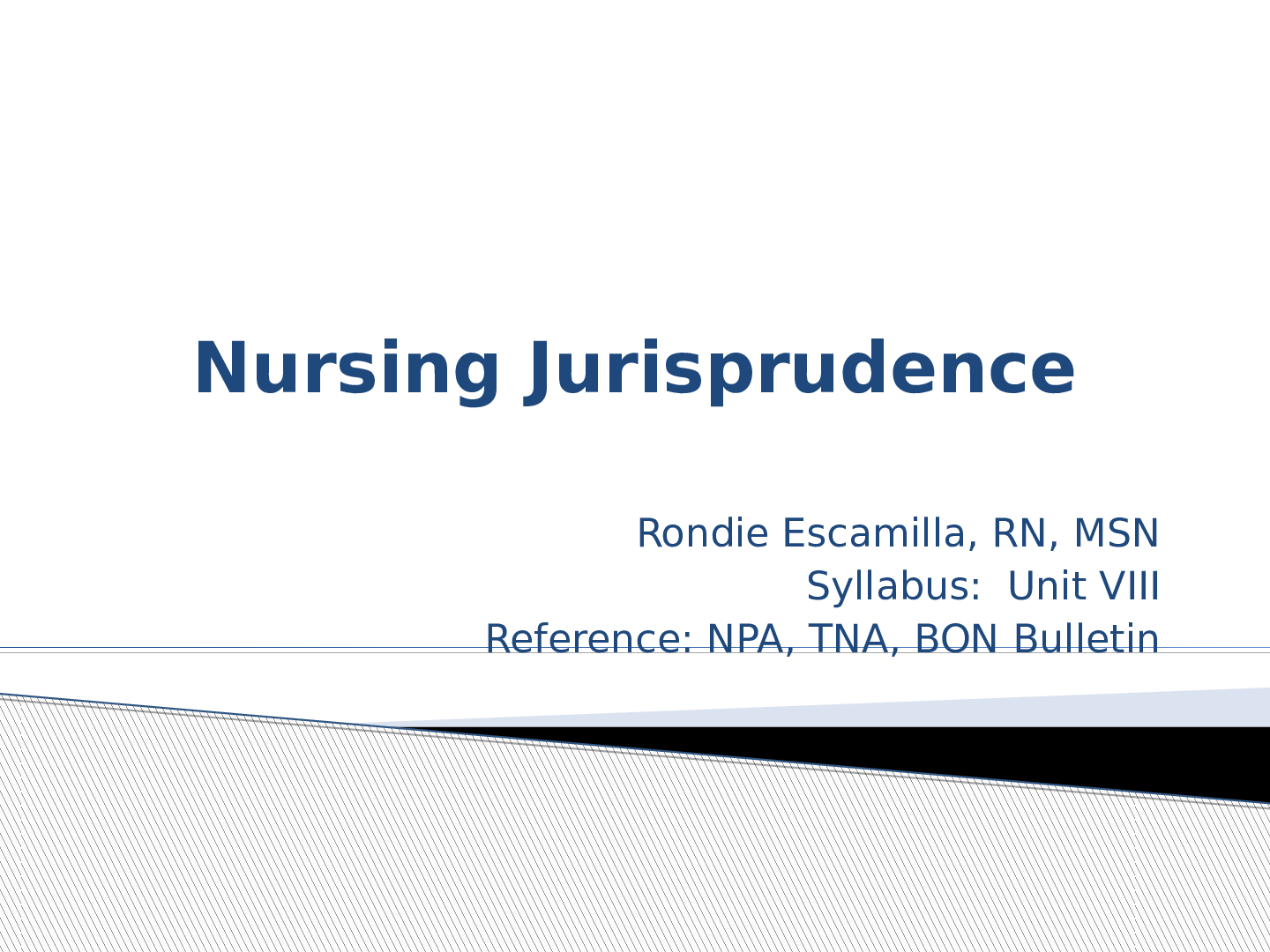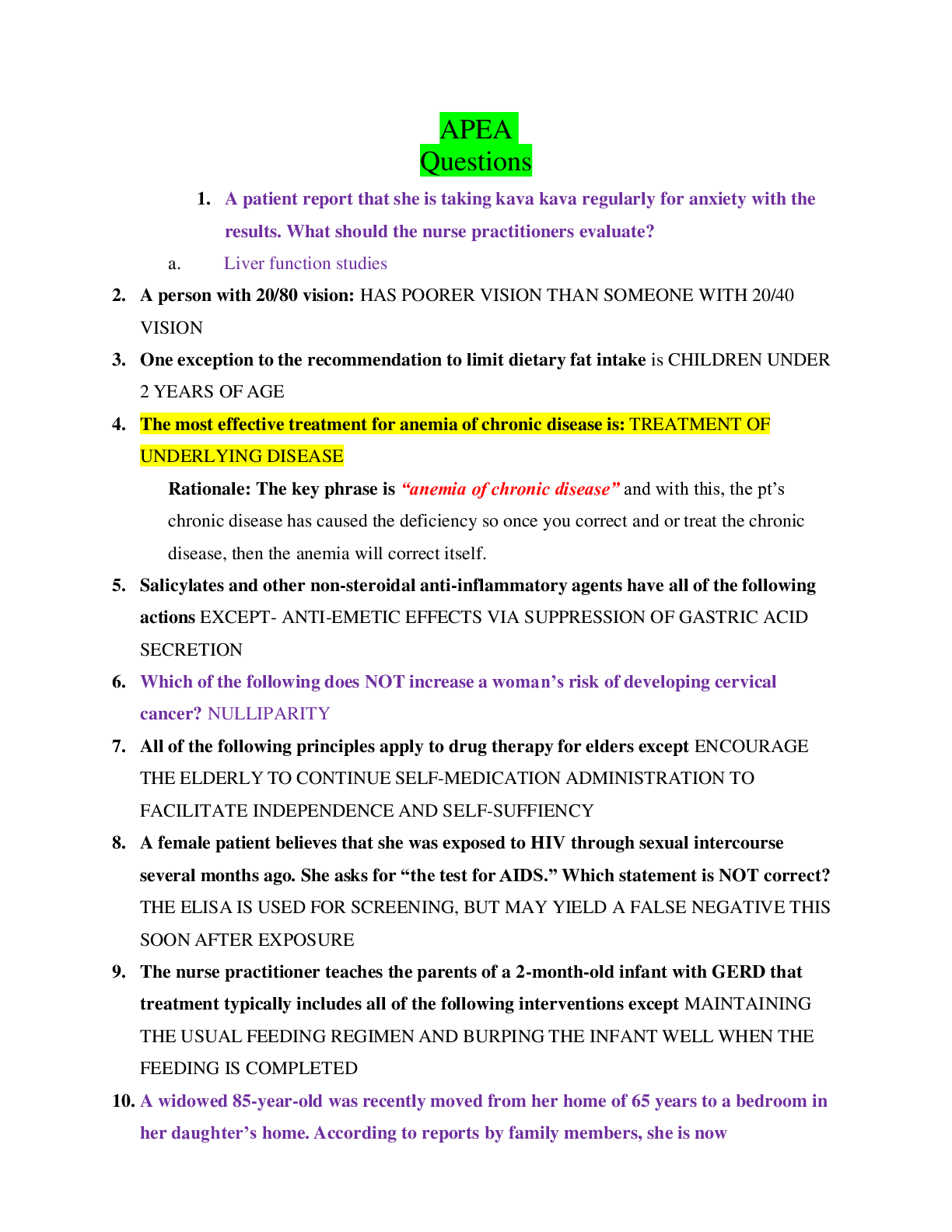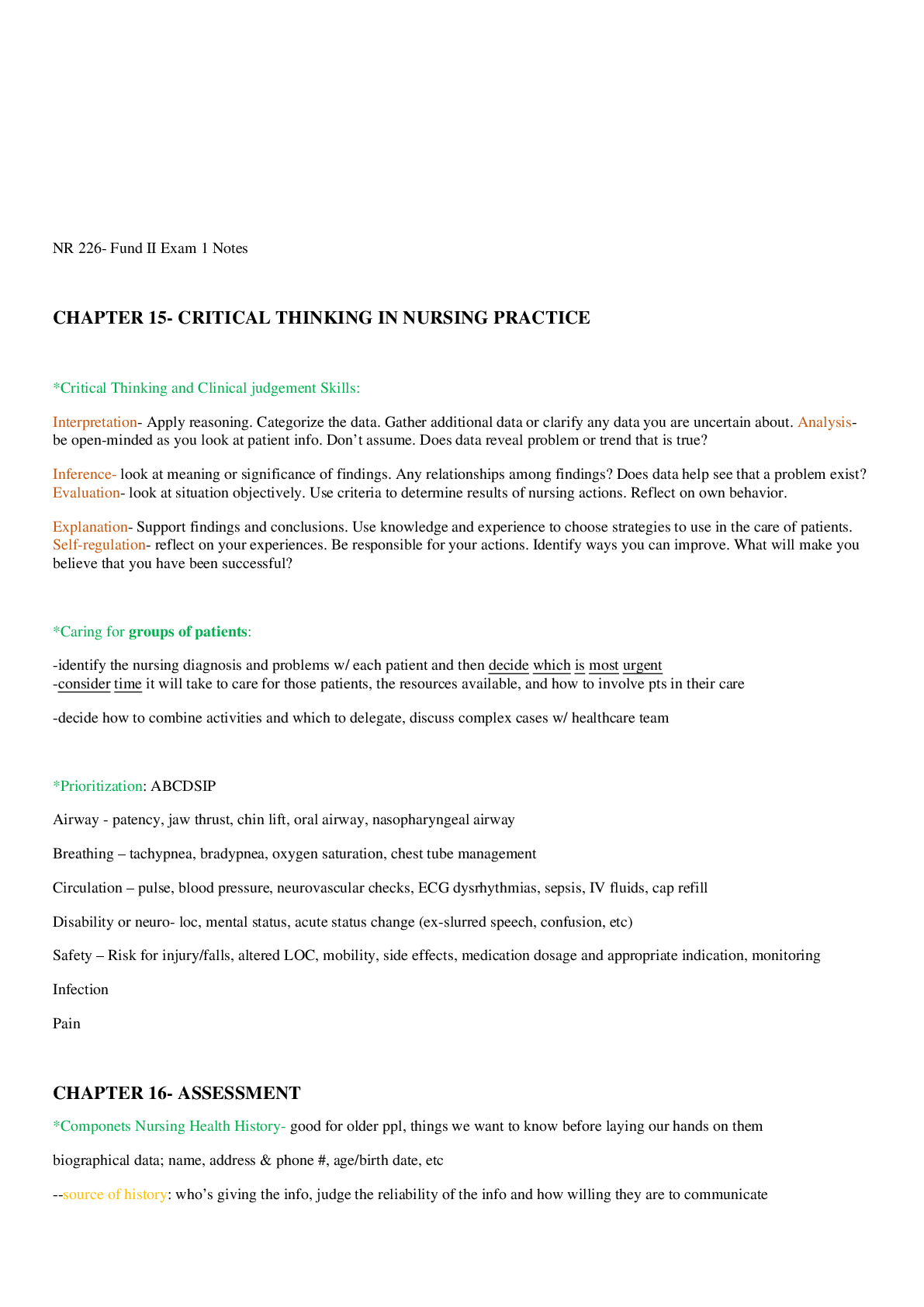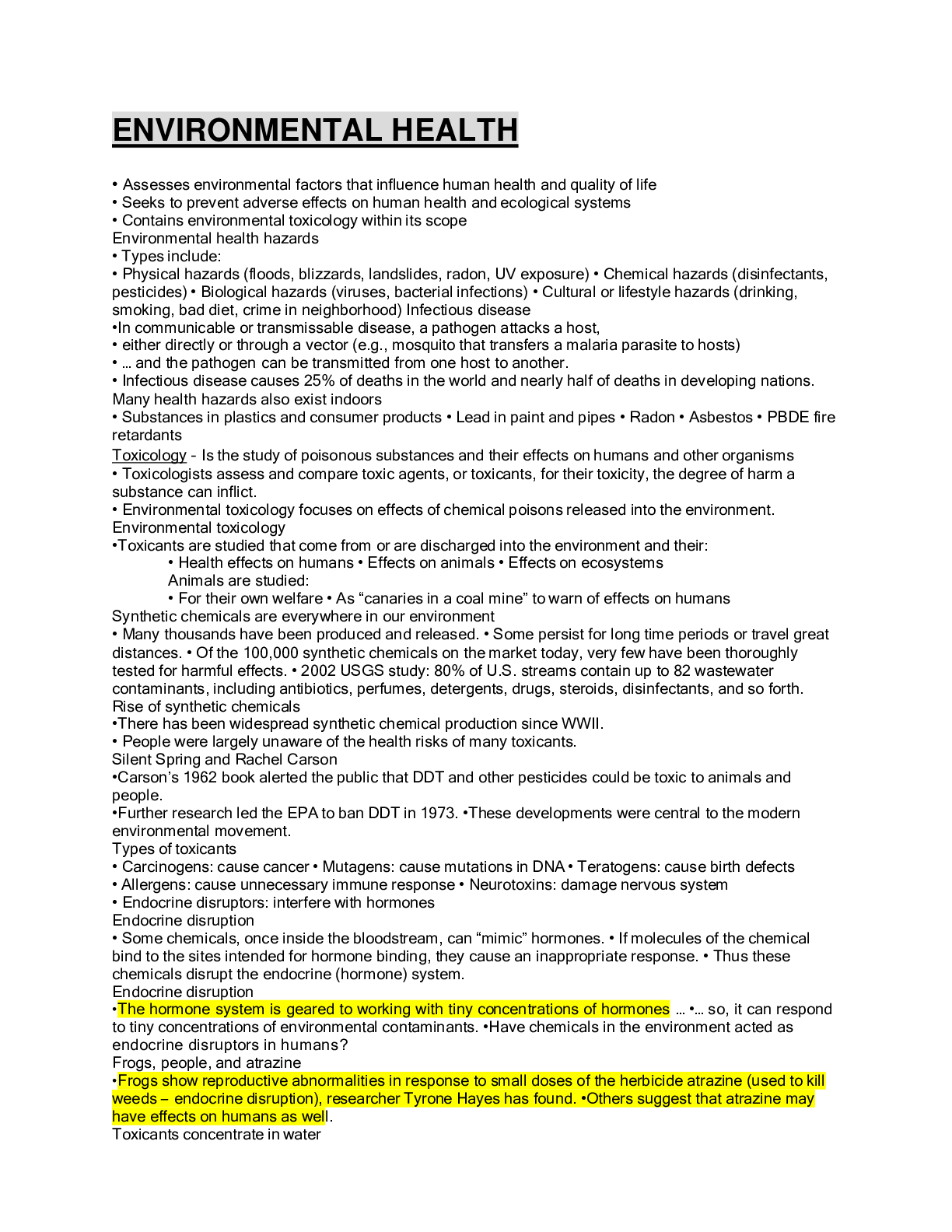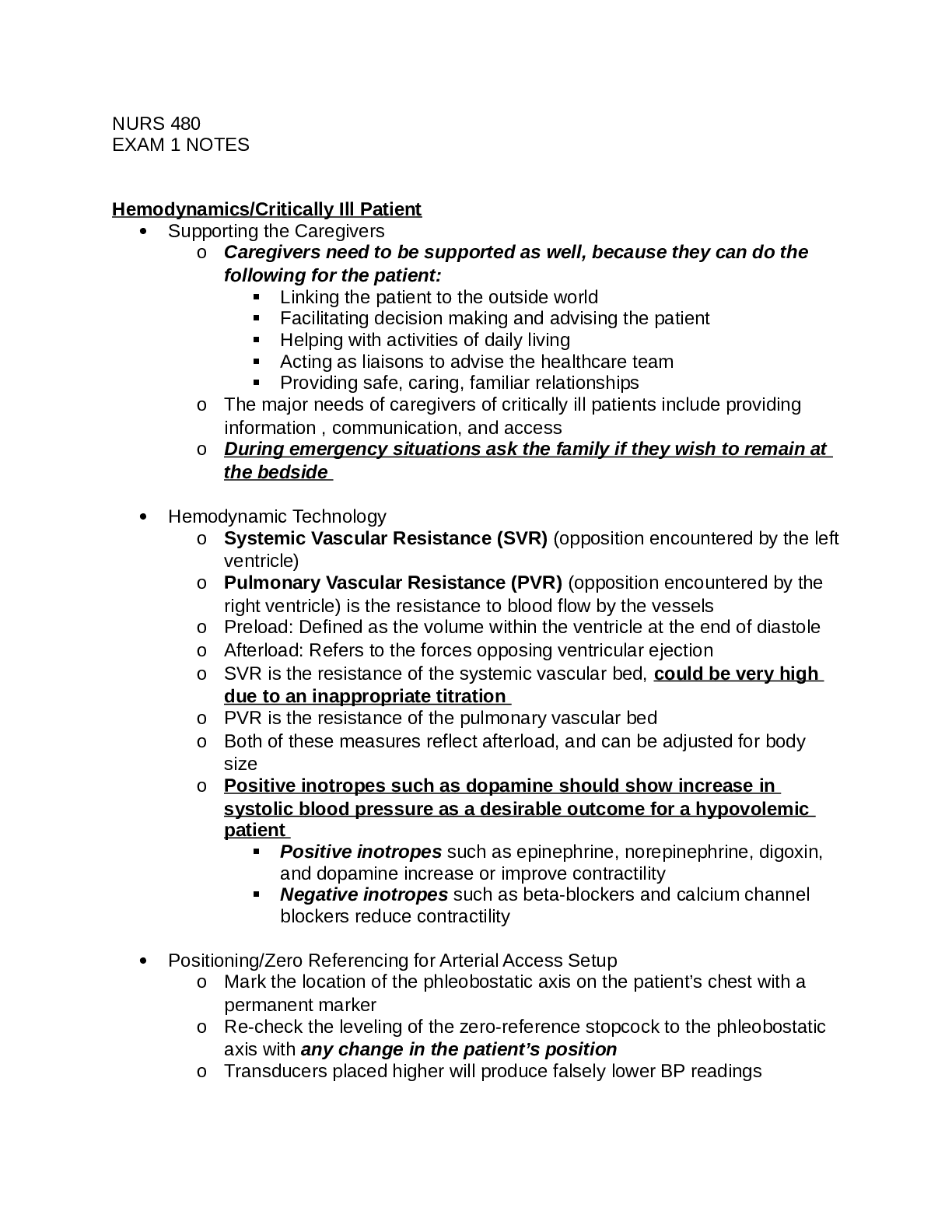*NURSING > EXAM REVIEW > Nursing Assessment Exam 1 Notes Prof Pinchera Nursing Assessment Exam 1 Notes Chapters: 1,2,3,4,5,6 (All)
Nursing Assessment Exam 1 Notes Prof Pinchera Nursing Assessment Exam 1 Notes Chapters: 1,2,3,4,5,6,7,10,13,20,23,24
Document Content and Description Below
Nursing Assessment Exam 1 Notes Prof Pinchera Nursing Assessment Exam 1 Notes Chapters: 1,2,3,4,5,6,7,10,13,20,23,24 Role of the Professional Nurse Role of the Professional Nurse • American... Nurses Association (ANA) Purpose of health assessment Wellness and Health Promotion Assessment in the Nursing Process • Evaluate: evaluate interventions Data Collection Critical Thinking Sources of Data: Symptoms and Signs Health History: Collecting Subjective Data Developmental Considerations • Cultural considerations Cultural Considerations o ”) Nonverbal Cues Interviewing Techniques Ten Traps of interviewing Sections of health history o Use consistently o OLDCARTS o Onset Objective Data • Preparing physical setting: o ) • Preparing oneself: Hand Hygiene Gloves Physical Assessment Techniques Inspection: Sense of Vision and Smell • Fs Palpation: Sense of Touch Percussion Sounds (tones) Elicited by Percussion Auscultation !) Healthy People 2020 • Healthy People is a program of nationwide health-promotion and disease-prevention goals set by the United Stated Department of Health and Human Services. The goals were first set in 1979, for the following decade. The goals were subsequently updated for Healthy People 2010, and Healthy People 2020. o Goals: • Healthy People 2010 “was developed through a broad consultation process, built on the best scientific knowledge and designed to measure programs over time.” It is composed of 476 specific objectives organized into 28 focus areas, as well as two overarching goals. These goals are: o I • To track the Healthy People 2010 objectives, national data are being gathered from 190 sources. • Ten “Leading Health Indicators” reflect major health concern: • The campaign identifies 6 major factors (Social Identities) that contribute to disparities in the health of Americans Healthy People 2000 and Healthy People 2020 • Healthy People 2010 expanded and updated the 1979 “Healthy People” and 1990 “Healthy People” efforts; for example, the Healthy People 2000 goal of “reducing health disparities” was strengthened in Healthy People 2010 to “eliminate health disparities”. • Healthy People 2020 expanded on Healthy People 2010 and was presented on December 2 2010. • For three decades, the US Department of Health and Human Services has set goals to guide individuals in making informed health choices. • On December 2, 2010 they launched the most recent agenda to improve our nation’s health, Healthy People 2020. Compared to the ambitious 2010 goals, the 2020 goals are more realistic. General Survey and Vital Signs Assessment Introduction General Survey When to assess vital signs Acute Assessment • Rapid response team may be called for Assessing Temperatures Assessing Pulse • Auscultate pulse with stethoscope • Palpate peripheral arteries Assessing Blood Pressure • Stethoscope and sphygmomanometer Assessing Respirations • Inspection Pain Assessment Pain assessment • Prevalence of unrelieved persistent pain in United States population has been estimated at o Hea • Under-recognition • Under-treatment of pain • Pain is considered the fifth vital sign • Pain is uniquely experienced by each person o “ • It does not simply correlate with physical pathology, but is a subjective experience, with pathology only a part Types of Pain • Acute pain Barriers to Pain Assessment Pain Assessment Questions • Accept the patients rating for pain Possible Nursing Diagnosis Subjective Data Health History • Tips: Objective Data • Observe Reassessing and Documenting Pain • JCAHO requirements • Reassessing necessary to see if interventions are working • Institutions usually have policy for assessment and reassessment of pain Ongoing Pain Assessment • Analgesia (relief of pain) o Assesses effectiveness of medications o Use pain scale to reassess • Activities of daily living o Look for impairment in psychological, physical, occupational and social functioning • Adverse effects of drugs o Assess for any side effects of medications Dyspnea Constipation Documentation and Interdisciplinary Communication Introduction: • Prompt reporting and recording of patient assessment data are essential • 2007 o Errors in sentinel events o Failures in communication • Documentation o Transitioned from paper to a computerized, electronic form Patient Medical Record • Purposes of the medical record o Legal document o Communication and care planning o Quality assurance o Financial reimbursement o Education o Research • Components of the medical record o Nursing admission assessment o History and physical examination (H&P) by the primary health care provider o Primary providers orders o Plan of care or clinical pathway o Flow sheets documenting vital signs, intake and output (I&O) and routine assessments o Focused assessment sheets (neurological or postoperative reassessments) o Medication administration records (MAR) o Laboratory and diagnostic test results o Progress notes by different members of the health care team o Consultations o Discharge or transfer summary • Electronic Medical Record o Clinical agencies have computerized part or all of the patient’s medical record o eMAR o Permits the use of automated clinical surveillance Principles Governing Documentation • Confidentiality o Health Insurance Portability and Accountability Act (HIPPA) o Means keeping information private • Accurate and complete o Must accurately reflect what is observed, heard, auscultated, palpated, percussed, or smelled o Abbreviations o Organized o Timely Batch charting Point of care documentation Clinical significance o Concise o Critical thinking and clinical judgment o Nursing admission assessment Sometimes referred to as the nursing history any physical Within 24 hours Skilled nursing facility (SNF) Comprehensive information about the patient’s physical, psychological, functional, social, and spiritual abilities forms the basis for an individualized plan of care o Flow sheets o Plan of care / clinical pathway o Progressive notes SOAP notes PIE notes (Plan, Intervene, Evaluate) Focus note o Narrative notes Charting by exception o Discharge note o Home care documentation o Long-term care documentation o Written handoff summary Documentation • Use subjective and objective data • Subjective o Use client’s own words in quotes o Use OLDCARTS, PMH, FMH, Lifestyle practices o Review of systems Record pertinent negatives • Objective o Be systematic (head-to-toe, systems, or FHP o Make notes as you assess Verbal Communication • Verbal handoff o Reporting Qualities of effective reporting SBAR Reporting to the primary health care provider • Telephone communication • Patient rounds and conferences • Critical thinking and clinical judgement Skin and Nails Skin • Covers 20 square feet of surface area • Which areas of health status can the skin give clues about? o Nutrition o Hygiene o Hydration o Oxygenation- respiratory and cardiac o Immune Skin Functions • Protection • Perception • Temperature regulation • Absorption / excretion • Vitamin D production • Wound repair • Identification o Self image • Communication o Emotions expressed Acute Assessment • Prompt evaluation and interventions o Acute dehydration, cyanosis, or impaired skin integrity o Not usually emergent • Concern about cancer • Acute trauma and burns Subjective Data Collection • Chief complaint • Current history / medications • PMH • Family history • Lifestyle, occupational history and personal behaviors • Review of system • Focused health history related to common symptoms o Common integumentary symptoms • Lifespan considerations o Pregnant woman o Newborn, infants and children o Adolescents o Older adults • Cultural consideration Cultural Considerations • Cultural variations • African Americans o Keloid formation, fraction alopecia, pseudofolliculitis, folliculitis barbarae and perineal follicularis o Mongolian spots o Skin is commonly excessively dry • Southeast Asia o Men have less body and facial hair o Tattoos, body piercings and other skin abnormalities o Pigmentary disorders o Hori’s nevus and nevus of Ota • Henna tattoos • Mongolian spots Physical Exams: Objective Data • Skin is often overlooked • Long term non-assessment can lead to big time skin problems • Inspection o Rated +1 to +4 o Unilateral or bilateral edema o Found in dependent parts Skin Lesions • Traumatic or pathological changes in previously normal structures • Primary skin lesions o Atrophic scar o Keliod (scar) o Lichenification Other Areas of Concern • Pattern injuries o Scolds, belt marks, cigarette burns, electric stove marks • Ecchymosis o In various stages of healing Abuse, frequent falls, medications • Track marks • Evidence of cutting or self inflicted wounds Pressure Ulcers Stage 1 o Non-blanchable erythema of intact skin Stage 2 o Partial-thickness skin loss Stage 3 o Full-thickness skin loss; not involving underlying fascia Stage 4 o Full-thickness skin loss with extensive destruction Skin Cancers – ABCDE’s A- asymmetry Types of Skin Cancers Health-Promotion Teaching Skin self-assessments Risk assessments Sun protection Possible Nursing Diagnosis Alteration in skin integrity secondary to decubitus Increased risk for infection related to second degree burn Peripheral Vascular and Lymph System Assessment of the Peripheral Vascular and Lymph System • Abnormal findings Structure and Function Overview • Peripheral vascular system [Show More]
Last updated: 1 year ago
Preview 1 out of 30 pages
Instant download
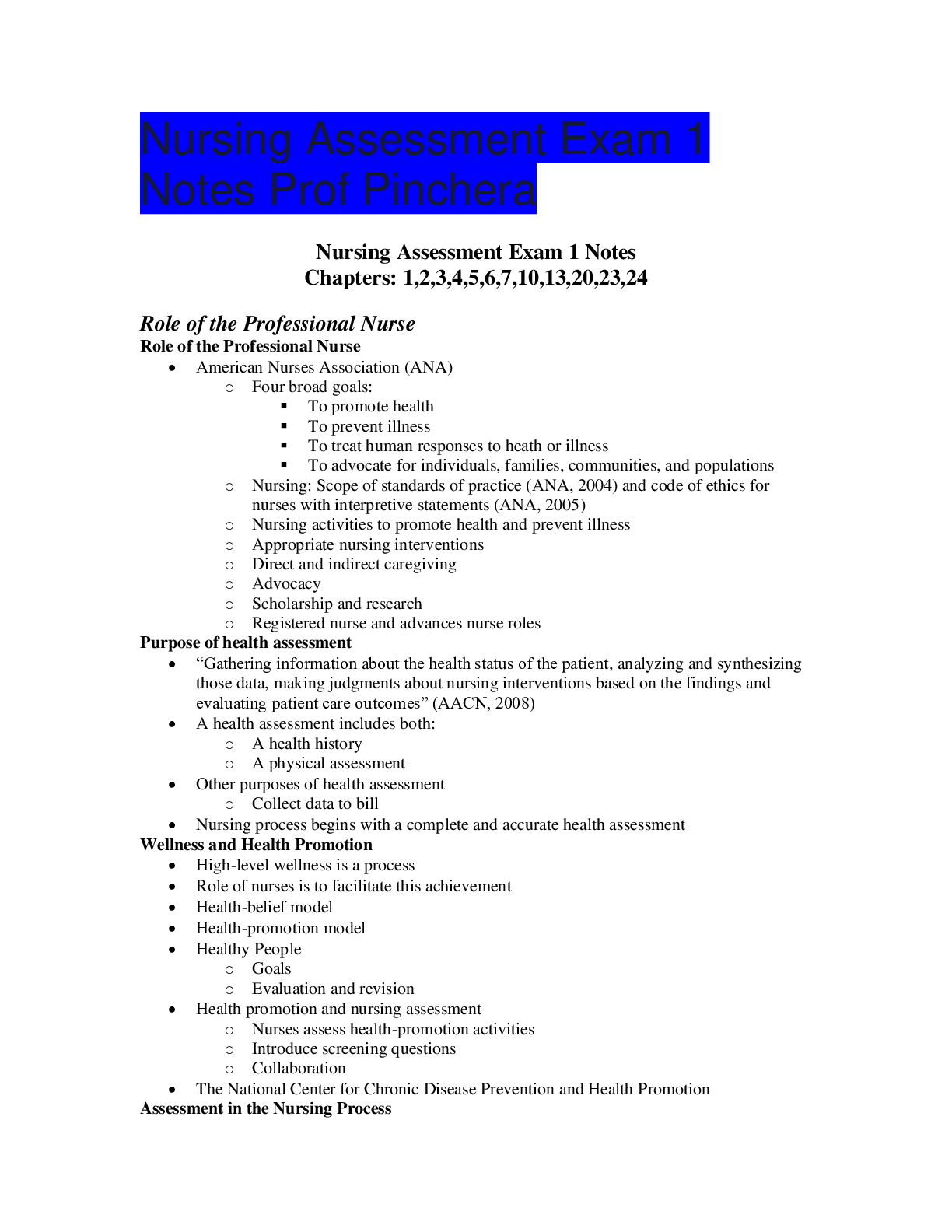
Buy this document to get the full access instantly
Instant Download Access after purchase
Add to cartInstant download
Reviews( 0 )
Document information
Connected school, study & course
About the document
Uploaded On
Jan 08, 2021
Number of pages
30
Written in
Additional information
This document has been written for:
Uploaded
Jan 08, 2021
Downloads
0
Views
37


